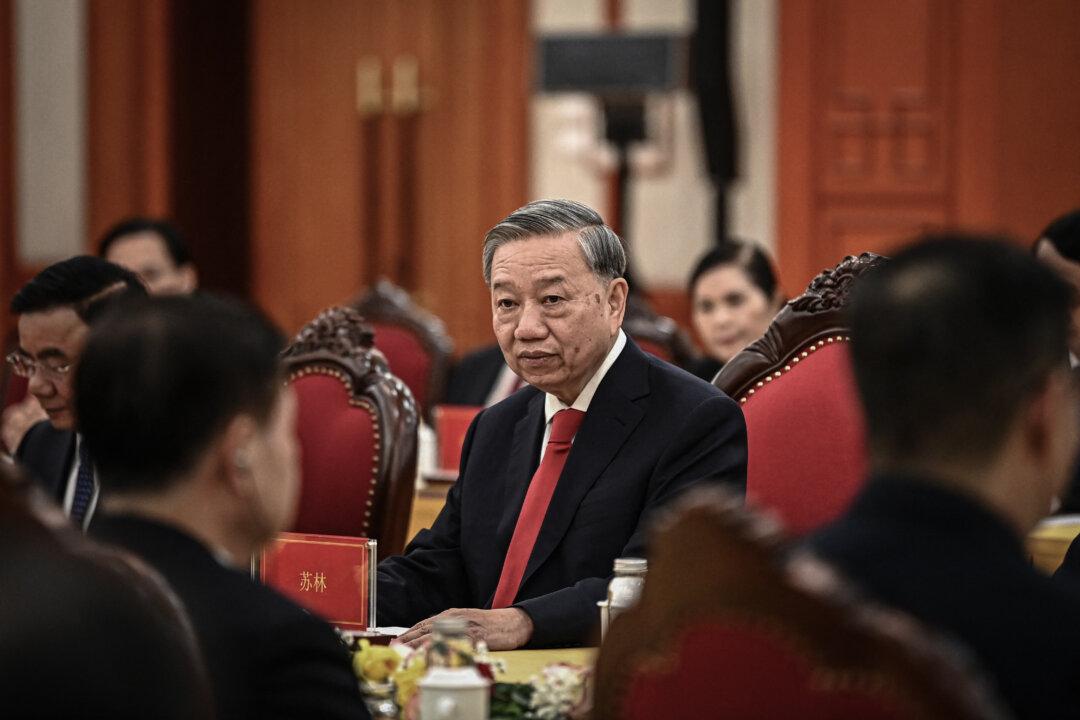The Chinese regime is positioning itself for the next iteration of the communications technology race with Western rivals by launching a national project to coordinate its major space actors.
China’s first centrally administrated satellite internet company was inaugurated in Xiongan New Area, southwest of Beijing, on April 28, according to the state-owned China Daily. Han Zheng, the vice-premier of the Chinese regime, reviewed the company’s proposed location and witnessed the cooperative agreement signed with the local administrative committee before attending the inauguration ceremony, said the report.
Over the past few years, there has been heightened interest in the commercial space industry. SpaceX’s Starlink has more than 1,300 satellites in orbit, surpassing other companies and governments in the world and serving over 10,000 users. Anther LEO broadband provider, OneWeb, has launched 146 satellites.
The communist regime refused to be left behind.
In April 2020, the National Development and Reform Commission added satellite internet to its information infrastructure construction plan. The new generation information industry is designed to deploy advanced technology, such as 5G, space-based internet, cloud computing, and artificial intelligence through this infrastructure.
The spectrum allocation (radio frequency allocation) applications submitted to the International Telecommunication Union in September 2020 unveiled a Chinese regime initiative called GW. The GW requires the use of two LEO constellations with 12,992 satellites, ranging between 366 and 711 miles above sea level and operating across the 37.5GHz–42.5 GHz and 47.2GHz–51.4GHz frequency bands.
The huge size suggests the GW is pursuing a global market, said Larry Press, a professor of information systems at California State University in an article he wrote for CircleID.
Currently, two major satellite internet projects in China are backed by the regime.
The Hongyun project was developed by the country’s largest missile maker China Aerospace Science and Industry Corporation and will concentrate services in remote regions.
The Hongyan project is expected to launch 300 LEO satellites, with $3 billion in funding for launching 60 satellites in the first phase. The state-owned enterprise China Aerospace Science and Technology Corp (CASC) is responsible for its construction.
Ge Yujun, president of China Spacesat, an affiliate of CASC, said, “Relevant Chinese authorities are making overall planning about China’s satellite constellation construction, including the Hongyan and Hongyun projects.”
“The Hongyan project might undergo major changes,” Ge added in a conference on April 16.
While scant on details of the overall plan, China Satellite Network Group, the newly founded national satellite network company, is reportedly overseeing space satellite internet construction and operation in the country.
However, the bureaucratic system and market demands would bring more challenges in developing satellite internet in China, an insider of China’s telecommunications service provider told Chinese media Caixin.
The satellite internet requires substantial investment, but the insider questioned its potential for profit. “The strategy of [developing] a Chinese astronomy industry is always ‘making sure there are no mistakes and ignoring the cost.’ Its rival, SpaceX’s Starlink, is already operating. It is not easy to catch up with only funding from the government.”
“It is the strategic value that pushes us to do it, although the business model of satellite internet is not mature,” said Mi Lei, founding partner of Casstar, a high-tech venture capital firm backed by the Chinese Academy of Sciences. “It is all about the priorities, completing the construction [of the satellite internet] first and then the business values.”




